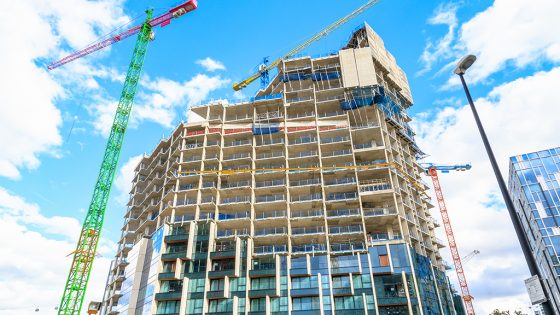The Health and Safety Executive (HSE) has acknowledged there are “teething troubles” with its regulation of building work, but added that “a very large proportion of cases” fail to comply at first.
When the Building Safety Regulator (BSR) took over building control of higher-risk building projects in April 2024, it took around 30 weeks for it to consider gateway two applications, which show a project is safe to progress to construction.
However, HSE chair Sarah Albon, speaking before Parliament’s Work and Pensions Committee on Wednesday (5 February), said the process had reduced to an average of 16 weeks — with delays being caused by other resource pressures at collaborating authorities and a poor standard of applications submitted.
Construction News reported last month that the BSR had given the green light for construction of only two out of 130 higher risk building schemes submitted by developers since the start of the new gateway regime.
“There are definitely teething troubles,” Albon told MPs. “There have been a number of major projects… that have been delayed. When we started a year ago, it was taking in the region of 30 weeks. We’re now down at about 16 weeks to consider an application.”
Albon added that of the 16 weeks it currently takes, around six are used to “identify people from fire and rescue services and from the local authorities who could be part of the multidisciplinary team”.
“We lose a significant amount of time in trying to get co-regulators to find the right resource to work with us. And I should say that’s not through any lack of willingness or effort from them, it’s just around the strain on their own capacity,” she said.
Albon also said that “a very large proportion of the cases that come in front of us are still failing to demonstrate that they meet the new safety standards that are required”, which “undoubtedly causes concern and cost and delay”.
“We are seeing somewhere still in the region of 40 per cent of cases, post-validation, when we look in detail at them, are not at first able to demonstrate that the buildings they want to build will be fit for the future and will be safe for people to live in them,” she said.
However, Albon said it was “the right thing” to spend longer scrutinising the design and build of higher-risk buildings, adding: “If we saw everything just sail through, you’d have to say, ‘is this regulatory regime going to make a difference?’.”
During the committee hearing, Albon also said that productivity at the HSE is being impacted by having “a ratio of experienced to inexperienced inspectors which is skewed much more than we are comfortable with towards newly-qualified and inexperienced”.
Albon said the ratio of experienced inspectors to inspectors under training is “almost 1:1” due to “really significant” recruitment freezes during the past decade, adding that experienced inspectors have spent “considerably more time in that mentoring, training, and development space than in an ideal world they would have”.

